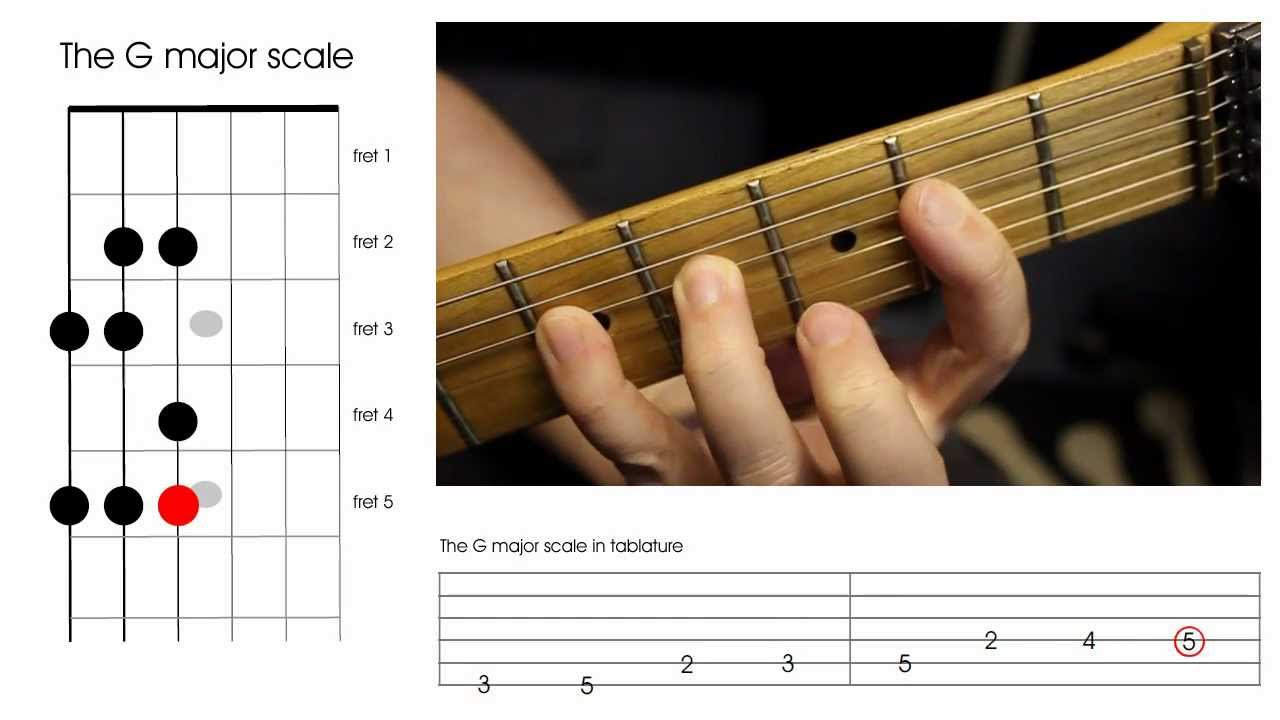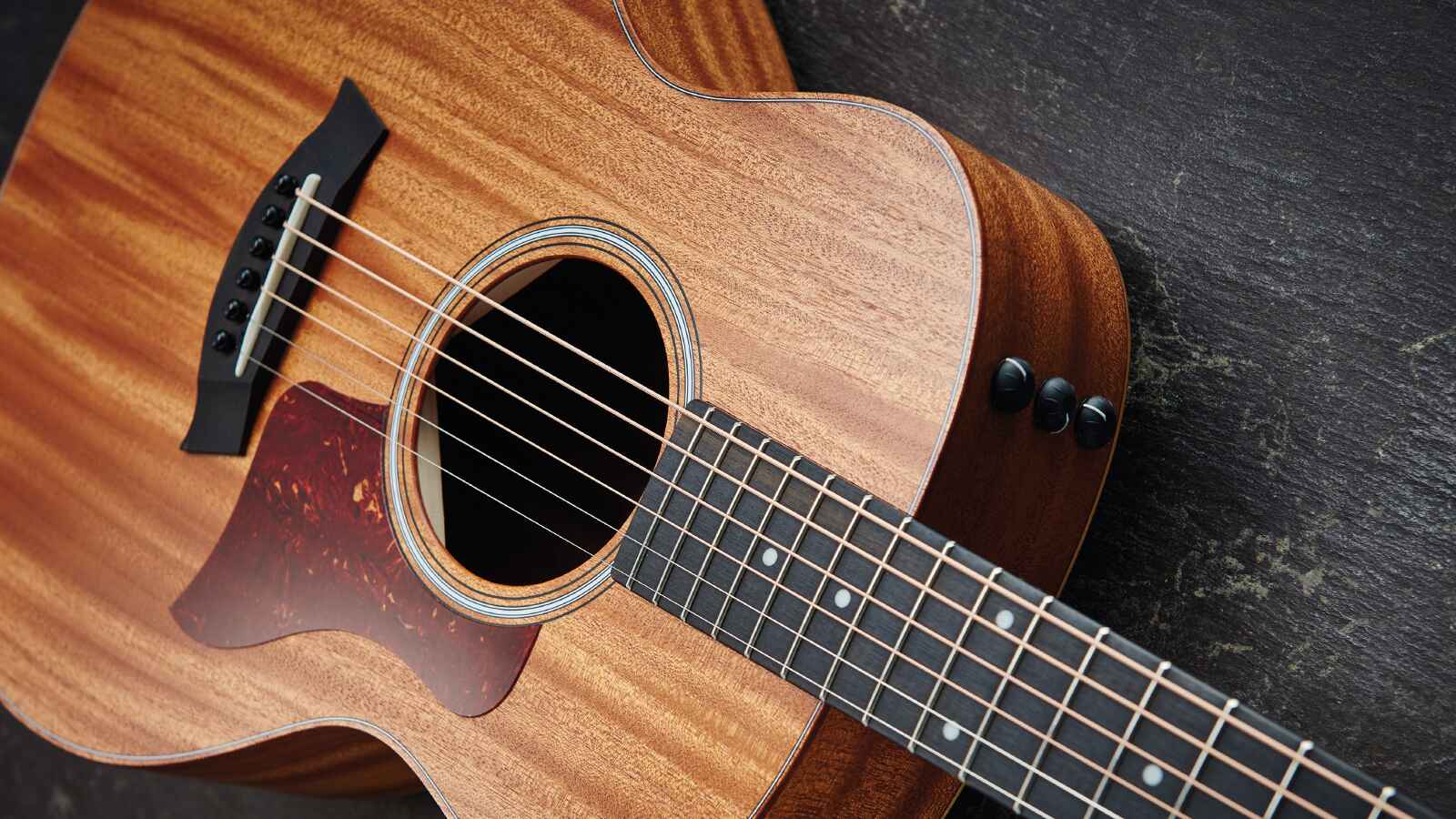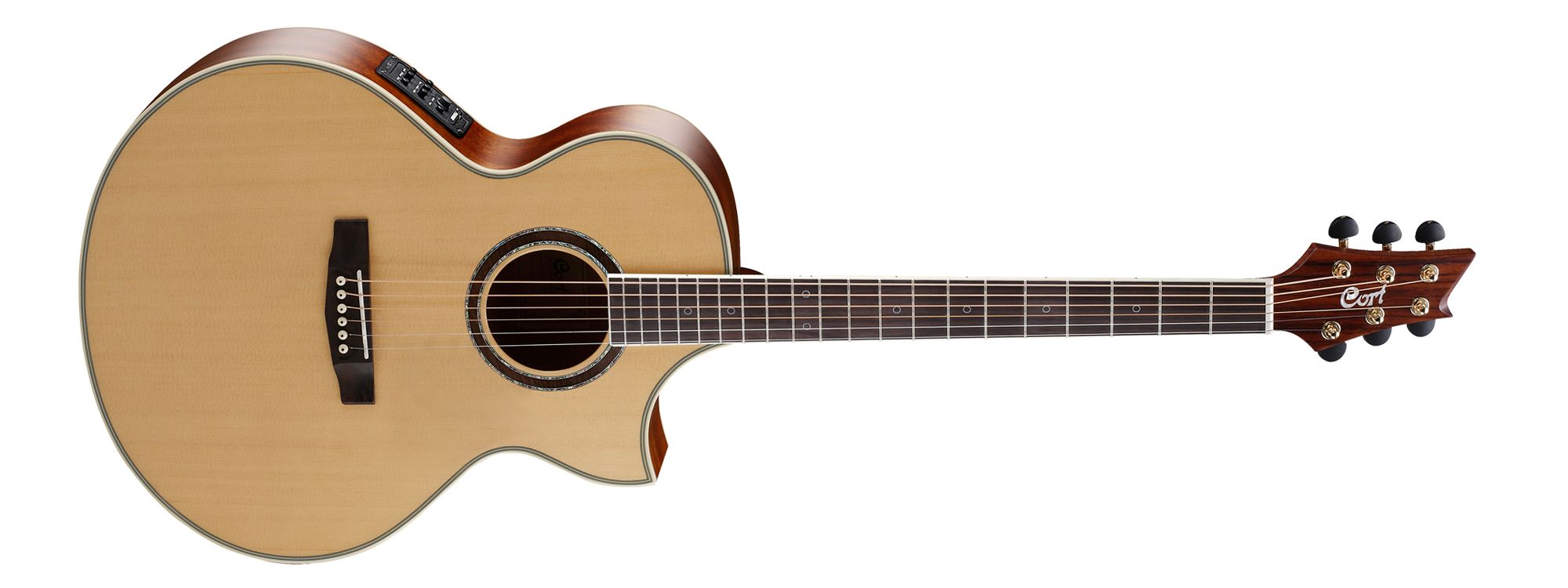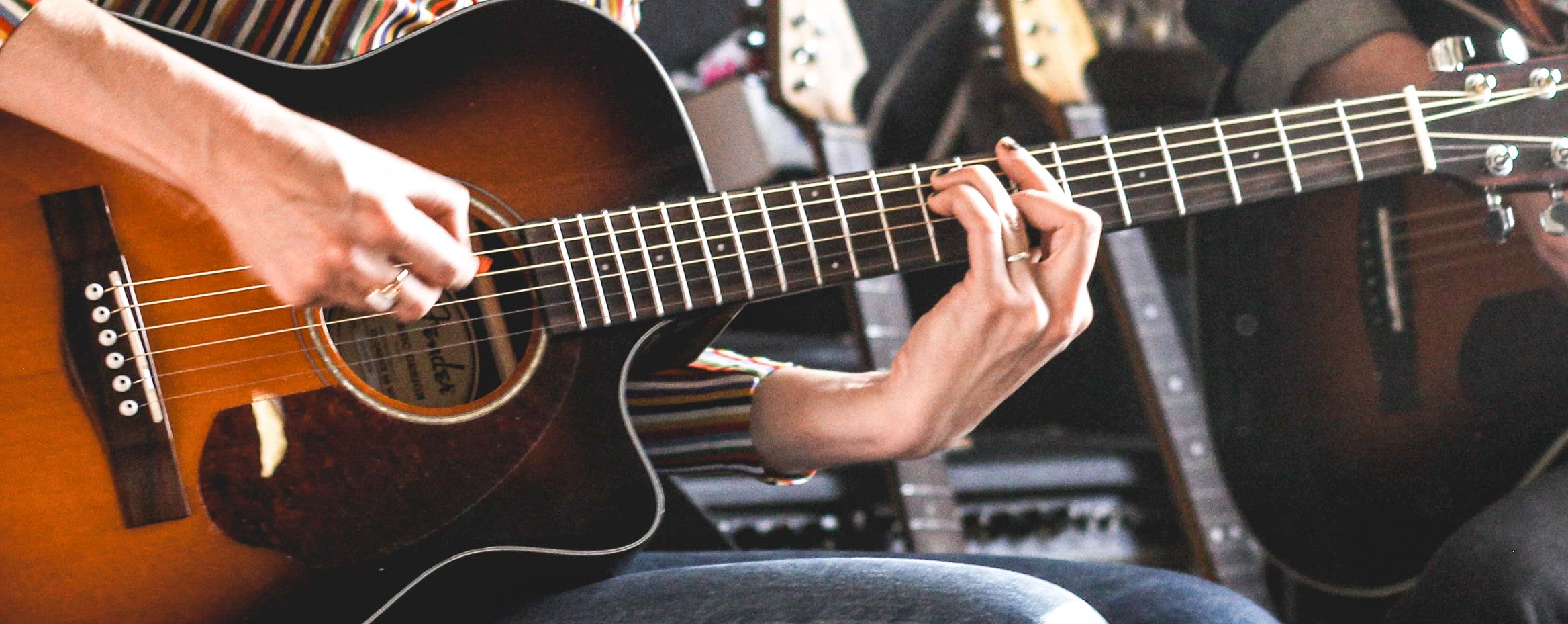Introduction
In the vast world of music, the guitar holds a special place. Its versatility, rich tones, and melodic capabilities make it a favorite instrument for many. Whether you’re a seasoned guitarist or just picking up the instrument, one fundamental skill that is essential to master is playing scales on the acoustic guitar.
Scales are a series of musical notes played in a specific order, and they serve as the building blocks for melodies, solos, and improvisation. Understanding scales not only trains your fingers and improves your technique but also sharpens your musical ear and expands your creative possibilities.
If you’re new to the guitar, let’s start with a basic overview. The acoustic guitar typically has six strings and is played by plucking or strumming the strings with your fingers or a pick. Each string is assigned a letter name (E, A, D, G, B, E) from the lowest-pitched string to the highest. The fretboard, where you press down the strings to produce different pitches, is divided into frets, which are metal strips that run perpendicular to the strings.
To play scales efficiently, it’s important to understand the layout of the fretboard. Visualizing the intervals and patterns across the fretboard will enhance your ability to play scales in different positions and keys effortlessly. Each fret represents a half-step or semitone, and each string, when played open, represents a specific note. By moving your fingers up and down the fretboard and pressing the strings against the frets, you can create different pitches.
What are scales and why are they important?
In the realm of music theory, a scale is a sequence of musical notes played in ascending or descending order. Scales serve as the foundation for constructing melodies and harmonies in various musical styles. They are crucial for developing technical skills, musical understanding, and improvisational abilities on the acoustic guitar.
Scales provide a framework for organizing musical ideas and understanding the relationship between different notes. By practicing scales, you become familiar with the intervals between notes and how they interact with each other within a particular key or mode. This knowledge allows you to create harmonically pleasing melodies and solos that fit well with the underlying chords.
One of the main benefits of mastering scales is the improvement it brings to your playing technique. As you practice scales, your fingers become more agile, and you develop muscle memory, enabling you to play effortlessly and accurately across the fretboard. This precision is essential for executing fast runs, intricate melodies, and fluid solos on the acoustic guitar.
Furthermore, scales enhance your ability to improvise and create solos on the fly. By internalizing different scales and their patterns, you can navigate the fretboard confidently and play melodies that reflect your musical ideas spontaneously. This improvisational skill is particularly valuable during jam sessions or live performances, allowing you to express yourself dynamically and interact with other musicians.
Moreover, scales serve as a common language among musicians. When collaborating with other guitarists or musicians, knowing scales enables you to communicate ideas effectively and establish a solid musical foundation. It opens up opportunities for jamming, songwriting, and creating harmonies with other instruments.
In summary, scales are essential for every guitarist on the acoustic guitar. They improve your technique, deepen your understanding of music theory, fuel your creative expression, and enable seamless collaboration with other musicians. As you embark on your journey to master the scales, remember that consistency and practice are key. The more you invest in practicing scales, the more proficient and versatile you will become on the acoustic guitar.
Basic knowledge of the guitar
Before diving into scales, it’s crucial to have a basic understanding of the acoustic guitar and its components. This knowledge will help you navigate the instrument effectively and develop a solid foundation for playing scales.
The acoustic guitar consists of several essential parts. The body is responsible for amplifying the sound produced by the strings. It can be made of different types of wood, each contributing to the instrument’s unique tone. The neck is attached to the body and houses the fretboard, where you press down the strings to produce different pitches. It’s typically made of wood and features frets that divide the neck into segments.
The guitar strings are usually made of steel or nylon, and their thickness affects the overall tone and playability. The top string, also called the lowest-pitched string, is typically the thickest and is known as the sixth string. Moving towards the floor, the strings are named A, D, G, B, and the highest-pitched string is called the first string.
At the top of the neck, you’ll find the guitar headstock, which holds the tuning pegs. These pegs allow you to adjust the tension of each string, thus altering their pitch. It’s crucial to keep your guitar properly tuned for accurate playing and practicing scales.
The three main playing techniques on the acoustic guitar are fingerpicking, strumming, and hybrid picking. Fingerpicking involves using individual fingers to pluck the strings, while strumming involves using a pick or your fingers to strike multiple strings simultaneously. Hybrid picking, a combination of fingerpicking and using a pick, provides more versatility and control over the sound.
Learning how to hold the guitar correctly is also important. It’s advisable to sit up straight with the body of the guitar resting comfortably on your thigh. Rest your forearm on the upper part of the guitar body, allowing your hand to move freely across the strings. Experiment with different hand positions to find what feels most comfortable and natural for you.
Lastly, familiarize yourself with guitar notation and tablature. Standard notation uses musical symbols and staff lines to represent the pitches and duration of notes. Tablature, commonly used for guitar, provides a visual representation of the strings and frets. Each number on a specific string indicates which fret to play.
Now that you have a basic overview of the acoustic guitar and its components, you’re well-equipped to begin your journey of mastering scales. Remember, practice and patience are key to becoming proficient on the guitar and unlocking your full musical potential.
Understanding the fretboard
The fretboard of the acoustic guitar is a crucial element to comprehend if you want to master scales effectively. Understanding the layout of the fretboard will allow you to navigate the instrument with confidence and play scales in different positions and keys.
First, let’s talk about frets. Frets are the small metal strips that run across the neck of the guitar, dividing it into segments. Each fret represents a half-step or semitone on the musical scale. By pressing down the strings against the frets, you change the pitch of the notes produced.
When it comes to scales, it’s important to know the names of the open strings. From the lowest-pitched string to the highest, the strings of the acoustic guitar are typically named E, A, D, G, B, and E. These open strings serve as reference points when playing scales and understanding their patterns on the fretboard.
One of the essential concepts related to the fretboard is intervals. An interval is the distance between two notes. When playing scales, it’s crucial to understand the intervals between the notes you’re playing. For example, a whole step represents a distance of two frets, while a half-step is a distance of one fret.
Learning scale patterns is a helpful way to navigate the fretboard more easily. There are various scale patterns, such as the major scale, natural minor scale, and pentatonic scale. Each scale has its specific pattern of intervals and fingerings that allow you to play it across the entire fretboard.
Another essential aspect of understanding the fretboard is visualizing the patterns. By recognizing scale patterns on the fretboard, you can play scales in different keys by shifting the same pattern up or down the neck. This skill is valuable for improvisation and playing in different musical contexts.
It’s also crucial to know the notes on the fretboard. By learning the names of the notes on each string, you can visualize and understand the relationships between scales and different chords. This knowledge will enhance your ability to construct melodies and solos that fit harmonically with the underlying chords being played.
Lastly, exploring the fretboard through practice is essential. Dedicate time to familiarize yourself with the positions and patterns of different scales. Gradually, you’ll develop muscle memory and an intuitive understanding of the fretboard, allowing you to play scales with fluidity and precision.
In summary, understanding the layout of the acoustic guitar’s fretboard is essential for mastering scales. It involves knowing the names of the open strings, understanding intervals, recognizing scale patterns, visualizing the fretboard, and learning the notes on each string. By developing a strong understanding of the fretboard, you’ll unlock the full potential of the guitar and be able to play scales confidently and creatively.
Common open position scales
When first starting to learn scales on the acoustic guitar, it’s beneficial to begin with open position scales. Open position scales are played utilizing open strings, which means that some strings are played without any fingers pressing down on the frets. These scales are commonly used in folk, country, and blues music, and they provide a solid foundation for your understanding of scales on the guitar.
One of the most widely used open position scales is the open position major scale. The major scale is a seven-note scale that has a happy and bright sound. The open position major scale is based on a specific pattern and can be transposed to different keys by shifting the pattern up and down the fretboard.
Another popular scale is the open position natural minor scale. The natural minor scale has a more melancholic and introspective sound compared to the major scale. The open position natural minor scale is based on the same pattern as the major scale but starts on a different note, giving it a distinct character.
In addition to the major and natural minor scales, two other commonly used open position scales are the open position pentatonic major and pentatonic minor scales. The pentatonic scales consist of five notes, omitting certain notes from the major and natural minor scales. These scales are known for their versatility and are widely used in various genres of music, including rock, blues, and pop.
Learning and practicing these open position scales will provide you with a solid foundation in fretboard navigation and finger dexterity. Start by familiarizing yourself with the scale patterns and fingerings, paying attention to the position of the open strings and the placement of your fingers on the fretboard.
Keep in mind that it’s important to practice these scales with correct technique and timing. Start slowly and gradually increase your speed as you become more comfortable with the patterns. Focus on accuracy and clarity of each note, ensuring that they ring out clearly and sustain properly.
By mastering the common open position scales, you’ll develop a strong foundation for playing melodies, improvising solos, and understanding the relationships between notes on the guitar. These scales will serve as a launching pad for your musical exploration, providing you with the tools to create beautiful and expressive music on the acoustic guitar.
Major and minor pentatonic scales
When it comes to playing scales on the acoustic guitar, the major and minor pentatonic scales are among the most versatile and widely used. These scales are commonly found in various genres, including blues, rock, country, and jazz. Mastering these scales will expand your melodic possibilities and provide a foundation for improvisation and soloing.
Let’s start with the major pentatonic scale. The major pentatonic scale consists of five notes and is derived from the major scale. It has a happy, uplifting sound and is often associated with catchy melodies and solos. The pattern of the major pentatonic scale can be used in any key by shifting the position of the pattern on the fretboard.
The minor pentatonic scale, on the other hand, has a more melancholic and soulful sound. Like the major pentatonic scale, it consists of five notes and is derived from the natural minor scale. The pattern of the minor pentatonic scale can also be transposed to different keys, allowing for flexibility in playing in different musical contexts.
Both the major and minor pentatonic scales have the advantage of being easy to learn and remember. The patterns are repetitive and can often be played with one or two fingers, making them accessible to guitarists of all skill levels.
Practicing these scales involves familiarizing yourself with the patterns and fingerings on the fretboard. Start by memorizing the shape of the scale and its positions on different strings. As you become more comfortable, incorporate different techniques, such as bending, sliding, and hammering on or pulling off, to add expressive elements to your playing.
When improvising or creating solos using the major and minor pentatonic scales, it’s important to develop a strong sense of rhythm and phrasing. Experiment with different note combinations, intervals, and rhythms to create melodies that capture the essence of the music you’re playing.
Remember that scales are not just a series of notes to be played in order, but rather a tool to express your creativity and musicality. Listen to recordings of your favorite guitarists and study how they use these scales to create memorable solos. Incorporate their ideas into your own playing but also strive to develop your unique voice and style.
Whether you’re strumming chords, playing rhythm parts, or soloing, the major and minor pentatonic scales will become your trusted companions on the acoustic guitar. Practice them regularly, experiment with different techniques and phrasing, and most importantly, have fun exploring the endless possibilities they offer.
Playing scales in different keys
As a guitarist, it’s important to be able to play scales in different keys. Being able to switch keys seamlessly allows you to adapt to diverse musical situations and expand your versatility as a musician. With practice, you can become fluent in playing scales in any key on the acoustic guitar.
One of the best ways to start playing scales in different keys is by understanding the concept of transposition. Transposing a scale means moving it up or down the fretboard while maintaining the same interval pattern. By shifting the position of the scale pattern, you can play it in any key.
For example, if you’re familiar with the open position major scale pattern in the key of C, you can easily transpose it to other keys. If you want to play the scale in the key of G, you simply shift the pattern up to the 3rd fret. Similarly, if you want to play in the key of D, shift the pattern up to the 5th fret.
Another effective technique for playing scales in different keys is the use of movable scale patterns. Movable scale patterns are scale shapes that can be played in any key and at any position on the fretboard. These patterns eliminate the need for complex fingerings and provide a consistent framework for playing scales.
By learning and memorizing movable scale patterns, you can easily play scales in different keys by shifting the pattern to the desired root note. Practice these patterns in various positions on the fretboard, starting from the open position and moving up the neck. This will enable you to play scales freely and confidently across the entire range of the guitar.
When practicing scales in different keys, it’s essential to pay attention to the relationship between the scales and the underlying chords. Each key has its unique set of chords that harmonize with the scales. Understanding these relationships will enhance your improvisational skills and enable you to create melodic lines that complement the chords being played.
Additionally, it’s crucial to practice scales using different rhythmic patterns and tempos. This will help you develop rhythmic proficiency and a strong sense of timing. Experiment with various rhythms, such as triplets, syncopation, and dotted rhythms, to add interest and dynamics to your playing.
Remember that consistency and regular practice are key when it comes to playing scales in different keys. Gradually increase the speed and complexity of your practice routine as you become more comfortable with the scale patterns. Practice with a metronome to further refine your timing and accuracy.
By mastering the art of playing scales in different keys, you’ll open up a world of possibilities on the acoustic guitar. Your ability to adapt to various musical contexts and express yourself creatively will flourish, allowing you to become a well-rounded and versatile guitarist.
Techniques for practicing scales
Practicing scales on the acoustic guitar is essential for developing precision, speed, and musicality. To make the most out of your practice sessions and maximize your progress, it’s important to employ effective techniques that focus on both technical proficiency and musical expression.
One technique to incorporate into your scale practice routine is slow, deliberate practice. Start by playing the scale at a slow tempo, focusing on accuracy and clarity of each note. Pay close attention to your hand positioning, finger placement, and overall technique. Gradually increase the tempo as you gain control and fluency. This method helps build muscle memory, allowing you to play scales smoothly and effortlessly.
Another technique is practicing scales using different rhythms. Instead of playing scales in a monotonous, straight rhythm, explore syncopation, dotted rhythms, and triplet patterns. This adds variety and musicality to your scales, helping you develop a strong sense of rhythm and phrasing. Experiment with different rhythmic patterns to infuse your scales with groove and creativity.
Incorporating dynamic variations is also important. Practice playing scales with different levels of dynamics, ranging from soft and gentle to loud and powerful. This helps you develop control over your picking or fingerpicking technique and adds expressiveness to your playing. Experiment with accenting certain notes or playing some notes softly while others are played with more intensity.
Utilize techniques such as hammer-ons, pull-offs, slides, and bending to add flavor and character to your scales. These techniques can create smooth transitions between notes, add articulation, and create melodic nuances. Practice incorporating these techniques into your scale playing to enhance your versatility and phrasing.
One effective way to improve your overall musicality is to practice scales alongside backing tracks or a metronome. This helps you develop a strong sense of timing and groove. Choose backing tracks in different styles and tempos to challenge yourself and improve your ability to adapt to different musical contexts.
It’s also beneficial to practice scales in different positions on the fretboard. Explore different scale patterns and positions, starting from the open position and moving up the neck. This allows you to become fluent in playing scales across the entire range of the guitar and develop a deeper understanding of the fretboard.
Lastly, embrace the concept of ear training while practicing scales. Train your ears to recognize the intervals and patterns within the scales. This will help you develop a better understanding of the scale’s harmony and enable you to improvise and create melodies more effectively.
Consistency is key when it comes to practicing scales. Dedicate regular practice time to scales, even if it’s just 10-15 minutes a day. Focus on quality practice rather than quantity of time. Ingrain the scales into your muscle memory and make them a natural part of your playing.
By incorporating these techniques into your scale practice routine, you will not only improve your technical proficiency but also develop musicality and expressiveness on the acoustic guitar. Embrace the journey of mastering scales and enjoy the sound of your progress as you explore the hidden possibilities within the scales.
Tips for mastering scales
Mastering scales on the acoustic guitar requires dedication, consistency, and the right approach. To help you on your journey, here are some valuable tips to enhance your scale practice and accelerate your progress:
1. Start Slow and Gradually Increase Speed: Begin by practicing scales at a comfortable tempo and focus on accuracy and technique. As you build confidence, gradually increase the speed, always maintaining control and precision.
2. Use a Metronome: A metronome is a valuable tool for developing a strong sense of timing and rhythm. Practice scales along with a metronome to ensure your playing is steady and in sync with the beat.
3. Practice Consistently: Regular practice, even in shorter sessions, is more effective than irregular practice. Set aside dedicated practice time for scales every day to build muscle memory and reinforce your skills.
4. Focus on Quality over Quantity: It’s better to practice scales with complete focus and attention to detail for a shorter duration rather than mindlessly playing them for hours. Quality practice helps solidify your technique and understanding of scales.
5. Play Along with Backing Tracks: Jamming along with backing tracks in different styles and genres allows you to apply scales in a musical context. Experiment with different tempos and chord progressions to enhance your improvisational skills.
6. Record and Evaluate Your Playing: Record yourself playing scales and listen back to identify areas for improvement. Pay attention to timing, note clarity, and overall fluidity. This offers valuable feedback and helps refine your technique.
7. Combine Scales with Chords: Practice playing scales alongside chords to understand their harmonic relationship. Experiment with playing scales over different chord progressions to develop your ability to create melodic phrases that fit harmonically.
8. Use Visual Aids: Visualize scale patterns on the fretboard using diagrams or tablature. This helps in memorizing the patterns and facilitates navigating the fretboard confidently. Over time, aim to rely less on visual aids and develop a strong mental map of the scales.
9. Vary Your Articulation: Experiment with different articulation techniques, such as hammer-ons, pull-offs, bends, and slides, to add dynamics and expression to your scale playing. These techniques create smoother transitions between notes and add personality to your playing.
10. Seek Guidance from a Teacher: Consider taking lessons from a qualified guitar teacher who can provide personalized guidance and feedback. They can help identify areas for improvement, suggest effective practice routines, and introduce advanced scale techniques.
Remember, mastering scales is a gradual process that requires patience and persistence. Embrace the journey, focus on continuous improvement, and have fun exploring the limitless possibilities that scales offer on the acoustic guitar.
Conclusion
Mastering scales on the acoustic guitar is an essential skill for every guitarist. It not only improves your technique, finger dexterity, and understanding of music theory but also expands your creative possibilities and musical expression. By incorporating the tips and techniques mentioned in this article, you can enhance your scale practice and accelerate your progress on the guitar.
Remember to start slow and gradually increase your speed, paying attention to accuracy and technique. Utilize tools like metronomes and backing tracks to develop a strong sense of timing and groove. Practice consistently and focus on quality practice rather than quantity. Recording and evaluating your playing will help identify areas for improvement, and playing scales alongside chords will deepen your understanding of their harmonic relationships.
Experiment with different articulation techniques, use visual aids to memorize scale patterns, and seek guidance from a qualified teacher if possible. Embrace the journey of mastering scales, enjoy the process, and celebrate your progress along the way.
With dedication, perseverance, and a passion for exploration, you will unlock the full potential of scales on the acoustic guitar. So pick up your guitar, dive into the world of scales, and let your musical journey unfold. Happy practicing!

























